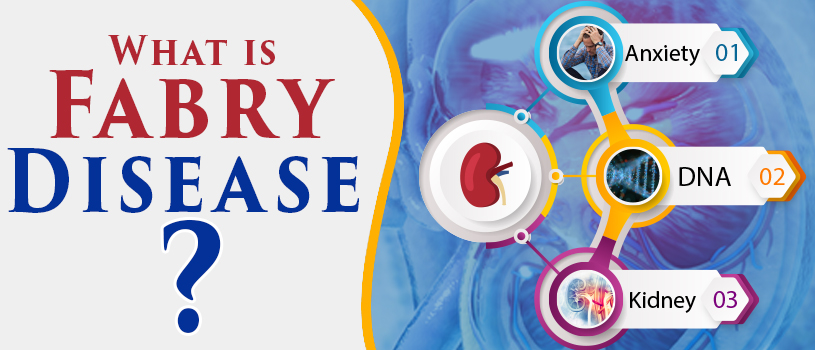Fabry disease, also known as alpha-galactosidase A deficiency, is a rare inherited disorder that affects the body’s ability to break down specific fats called globotriaosylceramide (GL-3). This buildup of GL-3 in the body’s cells leads to a range of symptoms, including:
- Skin lesions: Dark red, raised spots on the skin, most commonly on the elbows, knees, and buttocks.
- Acral paresthesias: Burning, tingling, or painful sensations in the hands and feet.
- Gastrointestinal problems: Nausea, vomiting, diarrhea, and abdominal pain.
- Eye problems: Clouding of the cornea, cataracts, and glaucoma.
- Kidney problems: Protein in the urine, decreased kidney function, and kidney failure.
- Heart problems: Cardiomyopathy, arrhythmias, and heart failure.
- Neurological problems: Stroke, depression, and cognitive decline.
The Cause of Fabry Disease:
Fabry disease is caused by a mutation in the GLA gene, which is responsible for producing the alpha-galactosidase A enzyme. This enzyme breaks down GL-3, so when it is deficient, GL-3 builds up in the body’s cells.
Types of Fabry Disease:
There are two main types of Fabry disease:
- Classic Fabry disease: This is the more severe form of the disease, which affects males more than females. Symptoms usually begin in childhood or adolescence.
- Late-onset Fabry disease: This is a milder form of the disease that can affect both males and females. Symptoms usually begin in adulthood.
Diagnosing Fabry Disease:
Fabry disease can be diagnosed by measuring the activity of alpha-galactosidase A enzyme in the blood or by testing for the GLA gene mutation.
Treatment Options:
There is no cure for Fabry disease, but there are treatments available to manage the symptoms and slow down the progression of the disease. Treatment options include:
- Enzyme replacement therapy: This treatment replaces the missing enzyme alpha-galactosidase A.
- Chaperone therapy: This treatment helps to stabilize the alpha-galactosidase A enzyme and improve its function.
- Pain management: Medications can be used to manage pain caused by acral paresthesias and other symptoms.
- Other treatments: Depending on the individual’s symptoms, additional treatments may be necessary, such as medications for heart problems, kidney problems, or neurological problems.
Living with Fabry Disease:
Living with Fabry disease can be challenging, but with proper diagnosis, treatment, and support, individuals can lead fulfilling and productive lives. Here are some tips for living well with Fabry disease:
- See your doctor regularly: Regular checkups are important to monitor your condition and make sure that you are receiving the appropriate treatment.
- Follow your treatment plan: It is important to take your medications as prescribed and to attend all of your appointments.
- Make lifestyle changes: Making lifestyle changes, such as managing stress, eating a healthy diet, and exercising regularly, can help to improve your symptoms.
- Join a support group: Connecting with others who have Fabry disease can be a great source of support and advice.
- Be patient: It may take time to find the right treatment for you. Don’t get discouraged if you don’t see results immediately.
- For more information: fuseinfusion.com




